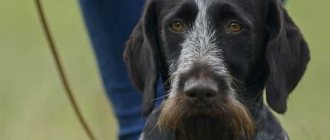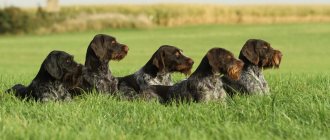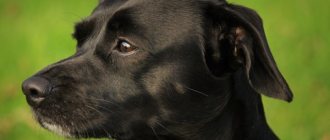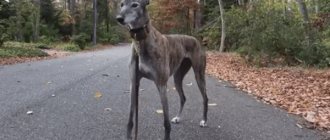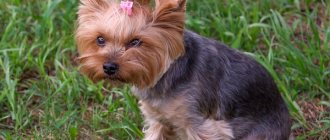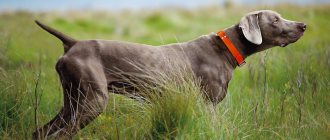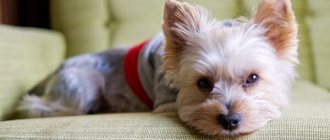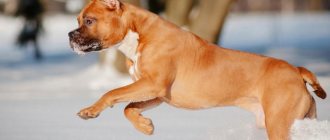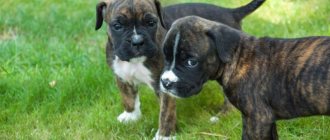The Drathaar is a breed of hunting pointing dog bred in the mid-19th century in Germany and then spreading first across Europe and then throughout the world. Currently, the Drahthaar, along with the Shorthaired Pointer, is the most popular and most common breed of hunting dog in our country. The drathaar's closest relatives are the shorthaired pointer and the langhaar. Let's tell you more about this wonderful breed of dog.
Origin story
The history of the breed goes back a long way. Dog handlers cannot determine exactly what types of dogs were used to breed it; their ancestors definitely included the German pointing dog, other hounds, and hunting varieties.
In the 16th and 17th centuries, broad-chested bird dogs were common in various European countries. They were good hunters of quail, pheasant, and other birds. The modern German Drahthaar has little external resemblance to that bird breed, but dog experts note that they were the carriers of the dominant hair gene.
The first Drahthaars were introduced at the end of the 19th century, and the official breed standard was approved in 1924. In the post-war period, active work was carried out to improve animals. The characteristics of the breed, in comparison with those initially established, have practically not changed, only minor nuances of appearance have appeared.
Reproductive function
A female dog's first heat can occur between 6 and 12 months of age. Puberty develops around the age of one and a half years. It is at this time that it is best to carry out the first mating. Pregnancy proceeds without pathologies. Childbirth is usually spontaneous. The average number of offspring in a litter is 10. German cops are good mothers. Sometimes, in the first days after childbirth, due to hormonal imbalance, behavioral disturbances occur. Bitches do not accept puppies and express aggression towards them. Typically, such disorders go away on their own, without external intervention.
Description of the breed
The appearance of drathaars inspires respect; the dogs look like powerful, determined animals. It is immediately clear that this is a hunting dog, as evidenced not only by its size, but also by its posture and gait. The established standard of appearance includes the following description:
- weight – 27-32 kg;
- height – 57-67 cm;
- the head looks proportional to other parts of the body, medium in size;
- the muzzle appears square due to the existing beard;
- the nose is wide, can be black, brown, or other colors (depending on coat color);
- the bite is correct;
- eyes are small, dark in color;
- the ears are drooping, but in the cartilage area they are raised to the top, slightly rounded;
- rectangular body, strong lower back;
- the neck is long, muscular;
- deep, wide-set chest;
- the tail is located at the middle level and has a saber shape.
The tail is rarely left in its natural shape; most often it is docked. The only exceptions are countries where this procedure is prohibited.
Drathaars are short-haired dogs, their breed is considered to be wire-haired. The undercoat is so dense and adheres to the body that it creates a waterproof effect. A smooth-haired dog is rarely suitable for hunting, so if you need to choose a dog for these purposes, the Drathaar will be an excellent option, even the characteristics of its appearance prove its ability to survive in difficult conditions.
Colors
The breed standard does not set clear color restrictions. The following options are common:
- coffee;
- coffee, diluted with shades of gray and black;
- all shades of gray and black;
- steel gray.
Many especially like representatives of the breed with a steel-gray base, diluted with small coffee stains. A white spot in the chest area is also allowed.
Choosing a nickname
Drathaar is a dog with a good disposition, but a serious look. Even puppies already look impressive, so you shouldn’t choose diminutive names. The nickname for a hunting dog should be short, sonorous, and easy for a person to pronounce and a dog to understand.
Nicknames for males: Rey, Mig, Prince, Chucky, Fox, Jack, Max.
Nicknames for bitches: Naida, Lada, Nora, Mika, Mira, Rika, Pani.
Character and hunting qualities
Working and hunting qualities determine the character of drathaars. They have extraordinary endurance, can withstand bad weather well, and can live for some time without food. Hunting instincts do not force the drathaar to obey fleeting desires, these dogs will not rush at everyone, like some other dogs.
If you plan to use endurance and other character traits of the animal during the hunt, you need to properly train the puppy. Despite the innate instincts, hunting qualities should be further developed.
High intelligence is manifested even in small puppies, and develops more and more with age. A smart pet immediately understands its place in the house, recognizing the authority of the owner. Training and raising a puppy takes place in a relaxed atmosphere; they grasp information on the fly.
The optimal place for a pet to live is an enclosure in the courtyard of a private house. If necessary, the drathaar's docile nature will allow him to get along in an apartment. Representatives of the breed are excellent companions, they are friendly and love all members of the owner’s family, especially small children. In relations with a child, the drathaar shows patience, and also develops protective qualities and a sense of responsibility for the baby.
Temperament
- A dog of the Drathaar breed has a firm, balanced, controllable, harmonious character, is not timid in front of game and when shooting, it should not be cowardly or malicious.
- The Drathaar is prone to dominance; the owner of the Drathaar must be a strong-willed person with a strong character, capable of establishing and maintaining his leadership over the dog. For an owner who fails to become a leader for their dog, the Drahthaar may grow out of control and become unmanageable.
- Drathaar needs constant intellectual and physical activity, without this he will get bored and throw out his unspent energy in the house.
- An adult, well-bred Drathaar is a friendly dog that gets along well with children, even small ones. School-age children are the drathaar's best friends in active games. But leaving the dog alone with children, without adult supervision, is still not recommended.
- Drathaar is strongly attached not only to his master, but also to all members of his family. Drathaar must realize his own importance, feel needed, loved, and a full-fledged member of a friendly pack. In a critical situation, a drathaar is able to stand up for both itself and any other member of its pack.
- Drathaar has innate protective qualities; he is an excellent watchman and protector. The Drathaar has a wary attitude towards strangers, which can lead to aggression; then the Drathaar will loudly bark at strangers until its owner approaches. It is not recommended to develop too much of a protective instinct in a drathaar, as it can lead to a distortion in the dog’s psyche and dangerous behavior of the dog.
- A young Drahthaar must undergo socialization in time and learn to build smooth relationships with other dogs.
- The Drathaar is a dog with highly developed hunting instincts that can turn on at any time. If cats or other pets live in the house with the Drathaar, this can lead to dire consequences, so you should not keep other pets in the house where the Drathaar lives.
Care and maintenance
The German Deutsch is absolutely easy to care for. Its endurance allows it to be kept outside in winter, so many owners decide to build an enclosure with their own hands or buy a ready-made one. The booth should be of such a size that the pet can lie down calmly, stretching out to its full height. It is important to ensure that the dog feels comfortable.
Grooming can be easily done on your own at home. It is not necessary to bathe your pet; do it if necessary if it is very dirty. This is possible due to the unique property of wool to self-clean. Hunting dogs do not need to visit a grooming salon, but if the coat looks unkempt, you need to comb it with a wide-tooth brush.
Considering the hardness of the wool, it is better to use a furminator rather than a regular brush.
It is necessary to comb the fur during the shedding period (twice a year). This is especially important if the pet lives in the house. Some owners simply trim the coat 2 times a year with scissors or a clipper. Caring for your ears and teeth involves regular examination of these organs.
Feeding
Drathaars are not picky about food, but when deciding what to feed your pet, you should not save money by giving it low-quality food. In order for a dog to have strength, endurance, and other strong character traits, proper nutrition is necessary. Some owners decide to feed their pet homemade food. Then the diet should include:
- meat, preferably raw (should be at least half of the daily portion);
- sea fish without bones, stewed or boiled;
- fermented milk products, at least 2 times a week;
- any cereals.
If you buy ready-made dog food, you need to choose only high-quality ones that have a natural composition. If they lack nutritional components, the drathaar will not be able to be active, energetic, or demonstrate its hunting skills. Dry food is especially practical for those who go hunting with their pet for several days.
What to feed a puppy
Puppies need frequent feeding. An adult drathaar should eat twice a day, a puppy up to 3 months needs to be fed 5 times a day, up to 6 months - 3-4 times a day. By 9 months of age, 2 meals a day begin.
You need to feed your puppy systematically at the same time. It is necessary to calculate the portion depending on weight and age. It’s easier to do this with dry food; you just need to follow the manufacturer’s instructions. Before the puppy arrives in the house, the owner decides on the food option.
It is necessary to constantly compare the puppy's weight with normal values. If he does not weigh enough for his age, his diet needs to be adjusted; excess weight is dangerous for the health of the drathaar.
Nutrition
The Drathaara cannot be classified as a breed prone to obesity and characterized by rapid weight gain. Therefore, he will not need dietary meals. And the type of feeding depends on whether the owner has time to prepare dishes. Dog handlers distinguish three types of food - mixed, ready-made factory food and natural homemade food.
Young Drathaar on a walk
In the case of ready-made food, it is important to understand that all the necessary components such as vitamins and microelements are already included in the product, and the ratio of proteins-fat-carbohydrates is balanced based on the weight, age of the dog and its breed. You should only buy premium food, since cheap food is made from low-quality products.
Natural food, according to some breeders, is healthier and more natural. But there are some nuances here: food must always be fresh, it requires vitamin complexes, the basis of the diet is meat, the purchase of which can be financially expensive.
In addition, it is important to remember which foods should not be given to your dog. However, there should not be any special problems with the last point. After all, everything that is prohibited for dogs is harmful for people. This is fried, salty, fatty, as well as baked goods, all types of sausages, chocolate, alcohol.
Drahthaar puppies feed every 2-3 hours during the day, while adults eat only in the morning and evening. Until the dog replaces his milk teeth with molars, it is important to soak the dry food in water.
Drathaar with a pheasant in his teeth
If the dog is on natural feeding, then it is worth treating the meat and offal with boiling water. In general, 40% of the diet should be animal proteins, and the remaining 60% is divided between complex carbohydrates such as buckwheat and rice, fermented milk products such as natural yogurt and kefir and fiber, that is, vegetables and fruits.
To prevent volvulus, which plagues this breed, it is recommended to avoid physical activity immediately after eating. Let your dog rest for 30 minutes on his bed.
Training and education
Training a puppy begins from the moment it arrives in the house. The first thing you should remember is your name, so it’s better to come up with it in advance so you can immediately start addressing your baby correctly. Common nicknames for boys of the breed are Nortis, White, Maurice, Walter, and girls are Viva, Dixie, Sheldy, Greta.
Deciding how to train a dog must be based on how it will be used. If a pet lives its entire life with its owners, leading a simple, measured life, it will not need hunting skills. First, the dog must remember the basic commands: prohibiting, calling, walking. Then you can choose one of the training programs by contacting dog handlers. Training of the drathaar, which will be used for hunting, also begins after learning a basic set of commands. If you have no experience in training hunting dogs, it is better to turn to professionals.
Mating
Drathaars are bred after full puberty - at 20-24 months. Ideal days are from 11 to 15 from the start of estrus. Wirehaired Pointers are introduced on neutral territory, after which the bitch is brought to the male.
Photo from the nursery https://animavenator.com.ua
Mating is carried out in a free manner. After 1-2 days it is better to do a control mating. Pregnancy lasts about 63 days, and childbirth is usually easy. Drathaar brings 5-8 puppies in a litter.
Diseases and life expectancy
The average life expectancy of representatives of the breed is 12-14 years, which is an excellent indicator for dogs of such a large size. How long drathaars live largely depends on proper care, maintenance, especially nutrition. Although they can survive in harsh conditions, it is the lack of nutritious food that makes them vulnerable.
Timely vaccinations for puppies can strengthen the immune system, preventing many diseases.
In general, the health of drathaars is good, but the following diseases may occur:
- hip dysplasia;
- volvulus;
- hypothyroidism;
- dermatitis, other skin diseases;
- cataract.
A number of diseases are less common: von Willebrand disease, melanoma. If you notice any suspicious symptoms, you should contact your veterinarian. Drathaars are hardy dogs that are not used to showing their weakness, so owners need to be attentive, regularly examine the animal, and observe changes in its behavior.
Briefly about the main thing
Drathaar is represented by Germany. The official description of the Drathaara breed indicates the following data: the height at the withers reaches 61-67 and 56-64 centimeters in males and females, respectively. Weight fluctuates between 27-32 kilograms.
Life expectancy is 12-16 years. It was recognized as a separate breed in 1904. Closest relatives: Kurtshaars and Langhaars.
Hunting
Drathaar can hunt hare, wild boar, and other small and large animals and birds. Despite this versatility of the animal, experts note that its most relevant use is for catching waterfowl.
Hunting with a drathaar is possible due to the characteristics of the coat, body structure, and other anatomical factors. Coarse fur protects the animal from injury from dry branches, a thick undercoat protects it from insect bites, and powerful paws help it run quickly without getting tired. Representatives of the breed are also noted for their ability to move silently, which is beneficial during hunting.
To fully use a dog for hunting, you must choose only a purebred puppy. Not a single drathaar mestizo has such endurance, strength, or other positive character traits.
Photo of drathaar
Photos of this dog with an extraordinary appearance only confirm the uniqueness and performance of the breed.
How to choose a puppy
To choose a puppy for hunting, you should find a suitable kennel that offers purebred Drahthaars. Hunters who keep working dogs can easily distinguish a mestizo; inexperienced buyers can fall into the hands of scammers. Therefore, you need to approach the place of purchase responsibly.
To confirm the puppy's hunting instinct, breeders usually provide documents not only about the dog's identity. Valuable are certificates about parents: what achievements they have, awards, medals. Also, when choosing a puppy, pay attention to the condition of its coat, skin, appearance, activity, and manners.
Comparison of breeds and mixtures
Drathaars are often compared to other hunting breeds, over which they have a number of advantages. This question usually worries those who get a dog of this type for the first time. For example, drathaar and shorthaired pointer have a number of similarities and differences.
Shorthaired Pointers are more suitable for home life. If the dog is always among people, the hunting instincts gradually fade away, which cannot be said about the German Deutsche. Drathaars are also more hardy and are more often used for hunting elk, wild boars, and other large animals.
Mestizos are not particularly popular; sometimes only the following attract attention:
- Mixed bobtail and drathaar. They have an original appearance. Their hunting instinct is weakly expressed; special training is required to develop it.
- Sheltie and Drahthaar mix. Sheltie is a sensitive breed that has a desire to constantly be close to its owner, in the family circle. From the drathaar, mestizos take courage, endurance, and protective qualities.
The price of mixed breeds is usually an order of magnitude lower, but to get a real hunting dog, it is better to choose a drathaar.
Application
Drathaar is a hunting dog with an excellent sense of smell and acute hearing. With proper upbringing, your pet can turn out to be a first-class watchman or security guard.
Modern German cops take part in competitions in:
- ski joring;
- bike joring;
- dryland.
Drathaars are often recruited to serve in the Ministry of Emergency Situations.
Pros and cons of the breed
The following are the advantages and disadvantages of the breed:
| + | – |
| Hunting Skills | Not a decorative dog |
| High intelligence | Doesn't look attractive |
| Tolerates cold calmly and can live in an enclosure all winter | Not suitable for apartment living |
| Not picky about food | |
| We learn quickly, easily master different programs |
Where to buy and price
The average price of a German Deutsch puppy with documents is 20,000-30,000 rubles. It is better to buy a dog from trusted kennels; the following have a good reputation: Vom Honeverg, Vedgetta, Von der Nebelau.
If you want to have a four-legged friend with a pronounced hunting instinct, the drathaar will be a suitable option. He is not picky in care, maintenance, nutrition, and can adapt to any conditions. High intelligence, endurance, and other positive character traits make him a loyal, intelligent dog.
Socialization
Drathaars are socialized at an early age - they are accustomed to new people, smells, sounds, and the company of other dogs. If this is not done, your German Pointer will have serious behavior problems in the future.
Drathaars do not like monotonous activities. An obedient pet can only be raised with praise, love and patience. Rough treatment breeds stubbornness and aggression.
The Drahthaar breed is suitable for large families with children. Energetic Wirehaired Pointers enjoy playing and playing pranks with kids: fetching a ball, running after a bicycle, swimming in the river, and in winter happily pulling a sled.
Properly socialized German cops get along in the same territory with other pets. In relation to cats and small rodents, the Drahthaar dog breed can exhibit a hunting instinct.
